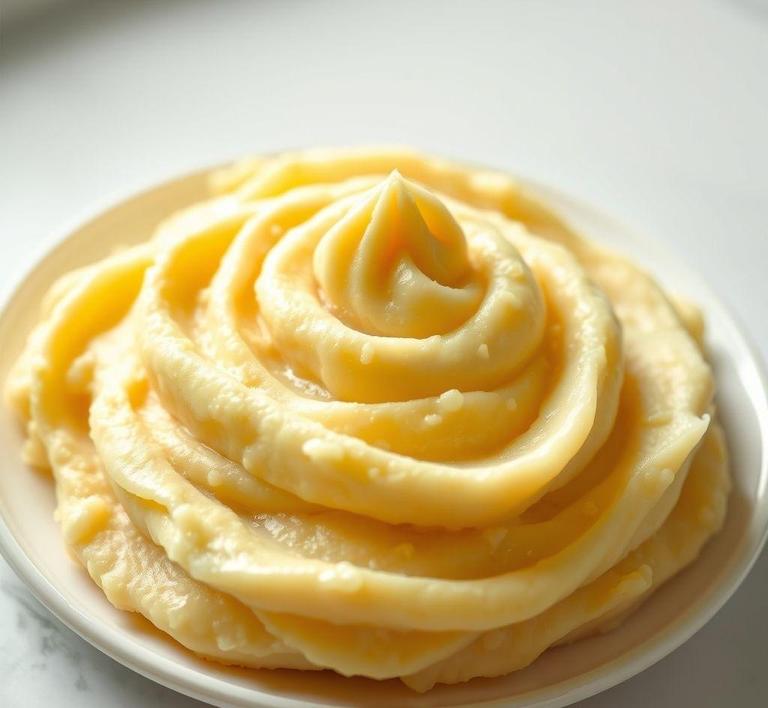Refreezing mashed potatoes may seem like a tricky idea at first, but with the right technique, it’s totally doable! Whether you’ve made too much at dinner or want to save leftovers for a future meal, refreezing mashed potatoes can help prevent food waste and make life a little easier. But, like anything, there’s a bit of a learning curve. The key is knowing how to properly store and reheat them so they maintain their creamy texture and delicious flavor. In this guide, we’ll walk you through the best methods to refreeze mashed potatoes without compromising on taste or quality.
Can You Refreeze Mashed Potatoes?

The short answer: Yes, you can refreeze mashed potatoes – but it’s not without some caveats.
Mashed potatoes are a starchy, moisture-rich food, which makes them particularly vulnerable to texture and flavor changes when frozen and thawed multiple times. However, if handled properly, refreezing them is both safe and sometimes necessary, especially if you’ve thawed more than you needed.
From a food safety perspective, mashed potatoes that have been thawed in the refrigerator (not at room temperature or in warm water) can be refrozen without causing any health risk. This is due to the controlled environment of refrigeration, which slows bacterial growth. However, if the potatoes were left out at room temperature for more than two hours, they should not be refrozen, as they could harbor dangerous bacteria like Bacillus cereus.
How To Refreeze Mashed Potatoes?
If you’re aiming to refreeze mashed potatoes with minimal degradation in quality, follow this step-by-step method:
-
Assess the Condition:
Ensure that the mashed potatoes were thawed in the refrigerator and haven’t been sitting at room temperature or exposed to heat. The potatoes should still smell fresh and have a normal color.
-
Cool Thoroughly:
If the mashed potatoes were reheated after their first freeze, let them cool completely before refreezing. Never refreeze hot or warm food, as this can cause ice crystals to form quickly, damaging the cell structure and inviting bacteria.
-
Portion Wisely:
Divide the mashed potatoes into smaller portions. Use airtight containers or heavy-duty freezer bags. Flattening them in freezer bags not only saves space but also allows for quicker freezing and thawing later.
-
Remove Air:
Squeeze out as much air as possible to minimize freezer burn. Exposure to air causes oxidation and contributes to changes in flavor and texture.
-
Label Clearly:
Write the date and contents on each container. Ideally, refrozen mashed potatoes should be used within 1 to 2 months for best taste and texture.
-
Freeze Rapidly:
Place containers in the coldest part of the freezer. Rapid freezing minimizes the size of ice crystals, helping to preserve the smoothness of your mash.
Quality Impact
Now for the honest part: every time you freeze and thaw mashed potatoes, the quality takes a bit of a hit. This comes down to science – specifically the behavior of starch and water under freezing conditions.
Mashed potatoes contain a significant amount of water. When frozen, this water forms ice crystals, which can rupture cell walls and lead to a grainy or watery texture upon thawing. Repeated freezing and thawing can exacerbate this, making your once creamy mash turn into something closer to wallpaper paste if not handled well.
Here’s what to expect:
- Texture: The most noticeable change. Refrozen mashed potatoes often become less smooth and creamy, sometimes turning watery or mealy. To remedy this, reheat with a bit of butter, cream, or even a touch of cream cheese to bring back richness.
- Flavor: Mild flavor changes can occur, especially if the potatoes were seasoned before freezing. Garlic, herbs, or dairy can develop off-notes after being frozen multiple times.
- Appearance: Color usually holds up well, but potatoes with dairy can separate slightly during freezing. Stirring during reheating can fix this to an extent.
Pro tip: Mashed potatoes made with plenty of fat – think butter, cream, sour cream, or cream cheese – freeze better. The fat helps preserve texture and moisture, making them more resilient to the freezing process.
Refreezing mashed potatoes is entirely possible, provided you follow strict food safety guidelines and prepare for some inevitable texture changes. While they might not be quite as luscious the second time around, with a little culinary finesse – a splash of cream here, a pat of butter there – they can still be delicious.
Think of mashed potatoes as a canvas: even if it’s been painted once, with the right tools and a touch of creativity, you can breathe life back into it. Whether you’re meal prepping, saving leftovers, or simply salvaging a holiday overestimate, refreezing mashed potatoes is a practical, safe option – just don’t expect them to be quite as dreamy as the first spoonful.
Is It Safe To Refreeze Mashed Potatoes?
Refreezing mashed potatoes is generally safe, but it hinges on one critical factor: proper handling during each stage of preparation, storage, and thawing. Mashed potatoes are a starchy, moisture-rich food-an environment that can foster bacterial growth if not treated carefully. When mashed potatoes are thawed, their temperature rises, creating a window of opportunity for bacteria to multiply rapidly. If they are left in the "danger zone" (40°F to 140°F or 4°C to 60°C) for more than two hours, they should not be refrozen or even consumed.
However, if you thawed the mashed potatoes in the refrigerator and they have been kept at a safe, consistent temperature (below 40°F or 4°C), you can refreeze them without significant safety concerns. The quality, however, may suffer. Potatoes tend to lose some of their creamy texture after multiple freeze-thaw cycles, becoming grainy or watery due to the breakdown of starch and separation of liquids.
For best results, consider the type of mashed potatoes:
- Mashed potatoes with a high fat content (e.g., those made with butter, cream, or cheese) tend to freeze and refreeze better because fat helps preserve texture.
- Low-fat mashed potatoes may become chalky or gummy upon refreezing.
Signs That Mashed Potatoes Should Not Be Refrozen
Before you even think about returning those leftovers to the freezer, inspect them carefully. Here are clear warning signs that your mashed potatoes should be discarded, not refrozen:
-
Off Smell:
A sour, musty, or otherwise "off" odor is a red flag. Spoiled potatoes emit a distinct, unpleasant scent that’s impossible to ignore.
-
Discoloration:
If the mashed potatoes have turned gray, greenish, or have dark spots, it may indicate oxidation or mold growth-both signs of spoilage.
-
Slimy or Watery Texture:
While some separation of moisture is normal after thawing, a thick, slimy consistency suggests bacterial activity and spoilage.
-
Mold Growth:
Visible mold, even a small spot, renders the entire batch unsafe. Mold spores can spread beyond what’s visible to the eye.
-
Room Temperature Exposure:
If mashed potatoes were left out for more than 2 hours (or 1 hour in hot climates), they’re no longer safe to eat or refreeze. Bacteria like Clostridium perfringens and Bacillus cereus thrive in this environment and can cause foodborne illness even if the food is later reheated.
Common Refreezing Mistakes
Mistakes during the refreezing process can compromise both the safety and quality of your food. Avoid these common pitfalls:
-
Refreezing After Thawing at Room Temperature:
This is one of the most dangerous mistakes. Food thawed at room temperature enters the danger zone quickly. Even if it looks fine, it may harbor invisible but harmful bacteria.
-
Multiple Freeze-Thaw Cycles:
Constantly thawing and refreezing the same batch of mashed potatoes breaks down their structure and increases the risk of spoilage. Always divide your potatoes into smaller portions before freezing to avoid repeated thawing.
-
Not Cooling Before Freezing:
Placing warm mashed potatoes directly into the freezer can raise the temperature inside your freezer, risking other frozen foods. Plus, it can lead to condensation and ice crystals, damaging texture and flavor.
-
Using the Wrong Container:
Air is the enemy. Mashed potatoes stored in loosely sealed containers are prone to freezer burn, which gives them an unappetizing texture and flavor. Always use airtight containers or freezer bags with as much air removed as possible.
Tips And Tricks
Mastering the art of freezing and refreezing mashed potatoes requires a few culinary tricks:
-
Add Fat:
Mashed potatoes enriched with butter, sour cream, or cream cheese freeze better and retain a smoother texture when thawed.
-
Freeze in Portions:
Divide mashed potatoes into single- or double-serving sizes. This lets you thaw only what you need and avoids repeated freezing.
-
Label Clearly:
Date and label containers so you know how long they’ve been in your freezer. Aim to use them within 1-2 months for best quality.
-
Use a Vacuum Sealer:
If you have one, this tool removes all air and protects against freezer burn exceptionally well.
-
Reheat with Care:
Thaw mashed potatoes in the refrigerator overnight. When reheating, stir in a splash of milk or cream and gently warm them on the stovetop or in the microwave to restore their creamy consistency.
-
Consider Potato Varieties:
Russet or Yukon Gold potatoes work best for freezing due to their higher starch content. Waxy potatoes like red or new potatoes can become gluey when frozen and thawed.
Conclusion
Refreezing mashed potatoes is entirely possible-but only under the right conditions. Safety is paramount: always keep your mashed potatoes refrigerated and never refreeze them if they’ve been left out too long or show signs of spoilage. While texture and flavor may be affected slightly with each freeze-thaw cycle, you can preserve quality with a few smart techniques-adding fat, portioning, sealing properly, and reheating gently.
With a little care, that bowl of leftover mashed potatoes doesn’t have to go to waste. Instead, it can become tomorrow’s comforting side dish or even a creative base for a new recipe-like potato cakes or shepherd’s pie-ready to shine again after a rest in the freezer.


